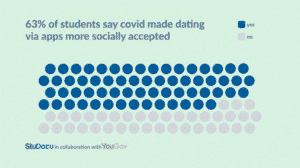Global Student Research Results Ask for Closer Look
One metric in our Global Student Satisfaction Research that hasn’t seen much global change over time is diversity and inclusion. Survey respondents who graduated in 2021 or earlier (collectively accounting for 20% of the total respondents) consistently rated diversity and inclusion at 8.1 out of 10. This is in line with 2022 alumni (also 8.1), 2023 graduates (8.2), and 2024-26 graduates (each 8.3).
But Germany is one country where students’ perceptions of diversity and inclusion at their universities may be shifting. The older cohorts consistently ranked diversity in the mid-7’s—and lower than the global average. But students in the 2022-26 cohorts have bumped the score above 8.0 (including the 2025 graduates, with a score of 8.3). This increase now puts Germany’s diversity and inclusion score in line with the global average.
While this does not prove that diversity and inclusion at Germany’s universities are actually in line with those in other nations, it can be suggested that German students now perceive these metrics at their schools much like students across the world.
The survey results contribute to ongoing research of Germany’s shifting demographics, though diversity information isn’t easy to come by. Unlike some countries including the United States and the United Kingdom, the German government does not collect race information, so it is impossible to trace demographic shifts.
(Other identities, such as gender identity and sexual orientation, are difficult to measure in most countries, Germany included.)
Still, due to large immigration influxes, Germany is experiencing a demographic transformation. While this shift is hard to quantify among university students in particular, there have been some publicly stated initiatives to increase inclusivity at the postsecondary and higher levels of education. Though anecdotal, these public declarations and initiatives—in conjunction with the survey findings—support the idea that university settings in Germany are becoming more diverse and more inclusive.
At the same time, however, university leaders tend to be men in their 50s, according to a recent analysis from the CHE Centre for Higher Education. Less than a quarter (23%) of higher education institutions in Germany were headed by women in 2020, the year of the study. The study did not include further demographic breakdowns, such as race or sexual orientation.
All results of our Global Student Satisfaction Research can be found in this report.






